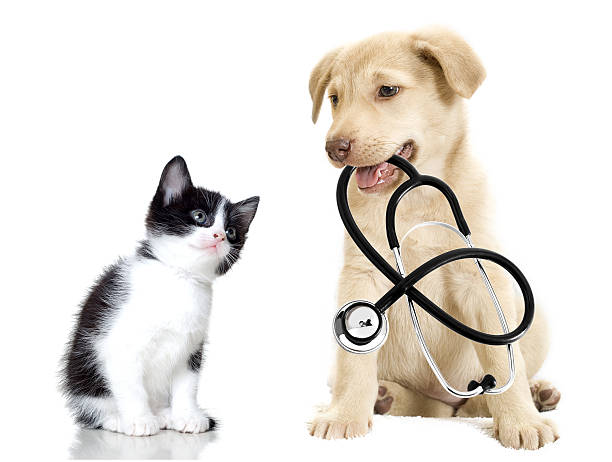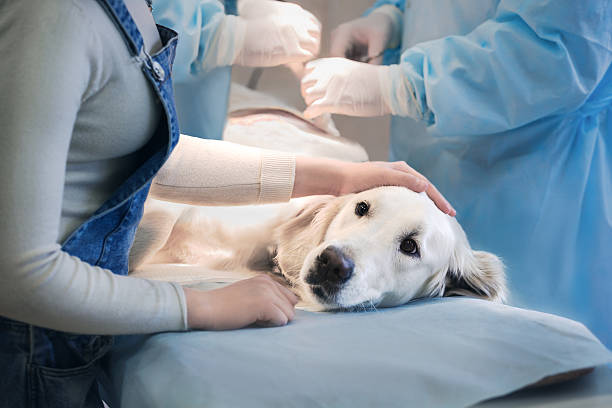Introduction
Your pet is your best friend and the love of your life. But, like with any relationship, there are some things that can be improved upon. By taking a proactive approach to caring for your dog or cat, you can improve the quality of life for both you and your furry friend.

A proactive approach to managing pet health and wellness is essential.
A proactive approach to managing pet health and wellness is essential. Pet owners should be proactive in caring for their pets, knowing how to recognize warning signs, symptoms and problems that may arise. The best way to do this is by regularly taking your dog or cat to the veterinarian for regular checkups.
Your veterinarian is your pet’s primary care provider.
Your veterinarian is your pet’s primary care provider. They provide routine medical care and vaccinations, as well as an annual physical exam and diagnostic testing that helps determine the cause of illness or injury. The veterinarian will also recommend preventative medicine for your dog or cat if there are any health concerns. Some of these recommendations may include prescription medications; others may require vaccines in order to keep them healthy over time.
By being proactive, we can improve our pets’ quality of life.
The first step to improving your pet’s quality of life is being proactive. By taking the time to learn about your dog or cat’s health and wellness, you can help ensure that he or she stays healthy for years to come. To begin with, take some time each day to spend with him/her—an hour or so each day will help build a strong bond between you and your furry friend.
- Vaccinations: Make sure all vaccinations are up-to-date by scheduling regular checkups with the vet (and bringing along proof). This will help prevent disease from spreading throughout their bodies as well as protect them against future illnesses caused by other animals in their environment who may carry similar diseases (or worse).
- Heartworm testing: Your dog should get annual heartworm tests done at least once per year; if he doesn’t show any signs of being infected then it’s safe not too worry about it until next year when another round comes around again!
Keep your pet’s vaccinations up to date.
- Keep your pet’s vaccinations up to date.
- Vaccinations are a vital part of disease prevention and should be given according to the manufacturer’s instructions. If you have any questions about which vaccines are right for your pet, speak with your veterinarian or contact us at [phone number].
Brush your dog’s teeth regularly.
Brush your dog’s teeth at least twice a week. If you are not sure how to brush your dog’s teeth, ask your veterinarian for advice. Use a soft toothbrush and toothpaste made for dogs. Be gentle but firm as you rub the paste gently across their teeth, paying special attention to the gums and back of their mouths where plaque can build up quickly.
Brush your cat’s teeth regularly.
To keep your cat’s teeth healthy, brush their teeth at least once a week. If you don’t have the time to brush them daily, try to do it every other day. Your veterinarian may recommend using a toothpaste formulated specifically for cats that contains fluoride and is free of animal ingredients (such as xylitol).
When brushing your cat’s teeth, use an old-fashioned soft-bristled toothbrush and very little toothpaste. The amount of paste will depend on how much tartar buildup there is on each tooth surface; use less if there isn’t much buildup or more if there is too much! Don’t use human toothpaste—for one thing, some contain perfluorocarbons (PFCs), which are toxic to humans and animals alike; also avoid products with fluoride because they can damage gums over time by giving them an unnatural appearance.

Remember that pets, like people, need exercise and mental stimulation.
- Give your dog mental stimulation.
- Keep your cat mentally stimulated.
- Give your cat exercise.
- Provide regular exercise for dogs, cats and other pets by getting them out on a leash (or in a crate) at least once per day if possible, or more often if you’re able to do so safely and properly—and make sure they’re happy with their surroundings! They’ll love it!
Use safe, effective flea and tick products on your pets as needed.
- Use safe, effective flea and tick products on your pets as needed.
- Maintain a healthy environment for your pet. This can be done by keeping indoor air clean and free of odors, providing fresh water in clean containers at all times, keeping floors clean and well-maintained, cleaning litter boxes daily with cat litter that is appropriate for the season (winter or summer), keeping food bowls full so they don’t have to go elsewhere to eat food when they’re hungry; etc., etc., etc..
Making your pet a priority.
The first thing to keep in mind is that your pet is part of the family. It deserves your attention and care, just like any other member of your household. If you want to make sure they stay healthy and happy, setting aside time each day for them is crucial. Your pet should be included in family activities such as camping trips or vacations, even if it means taking them along on outings longer than planned so that they feel like part of the fun too!
Knowing your pet’s body language.
- Recognize the difference between normal and abnormal behavior.
- Know the signs of stress, fear and pain.
- Know how to respond when your pet has these signs.
Recognizing warning signs, symptoms and problems that may arise.
It’s important to recognize the signs and symptoms of common pet health problems. This will help you know when it’s time to see a veterinarian.
- If your dog shows any of the following signs, go immediately:
- diarrhea (often accompanied by vomiting)
- vomiting or loose stools that aren’t firm enough for a toy or ball to be thrown into them (this may mean a blockage in the gut)
Taking your pet to the vet regularly.
If you have a pet, it’s important to take them to the vet regularly. Regular veterinary visits are essential for both your pet and their health as well. When should you take your dog or cat in? How often should they be seen? And what can you do before going in so that everything goes smoothly? If you’re not sure how often your pet needs to see the veterinarian, consult with their vet—they’ll be able to give advice based on their individual patient history and medical condition. The rule of thumb is that if something feels off or different about their behavior (for example: frequent sniffing around), then something may be wrong!

Conclusion
You can make a huge impact on your pet’s health and wellbeing by taking an active role in managing their health. The best way to do this is by taking your pet to the veterinarian regularly. Your veterinarian will be able to spot potential problems early on, which means that they can treat them before they become serious. By taking some time every month or so to visit your vet with your furry friend rather than just picking them up after work or right before bedtime, we’ll all be better off – both pets and owners alike!




Discussion about this post